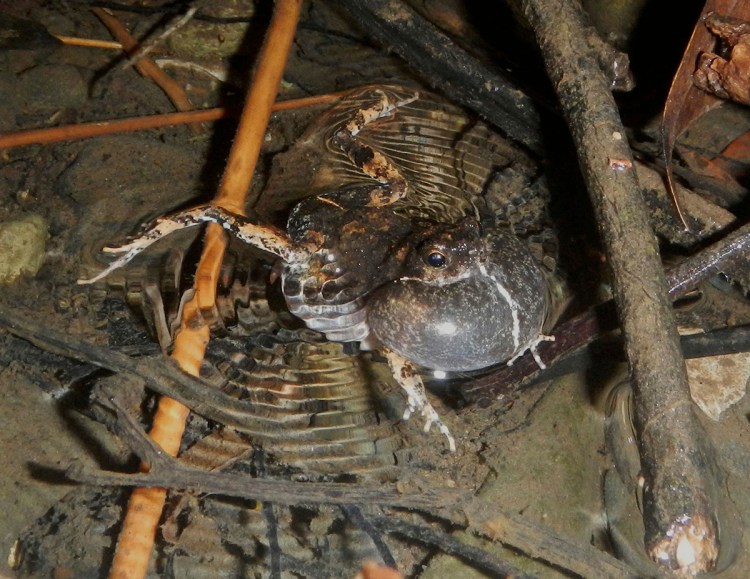WASHINGTON — City frogs and rainforest frogs don’t sing the same tune, researchers have found.
A study released Monday examined why Panama’s tiny tungara frogs adapt their mating calls in urban areas — an unexpected example of how animals change communication strategies when cities encroach on forests.
These frogs take advantage of the relative absence of eavesdropping predators in cities to belt out longer love songs, which are more alluring to female frogs.
Tungara frogs don’t croak like American bullfrogs. To human ears, their distinctive call sounds like a low-pitched, video-game beep. To female frogs, it sounds like pillow talk.
Every evening at sunset, the 1-inch male brown frogs crawl into puddles to serenade prospective mates. The lady frog selects a mate largely based on his love song.
Researchers found that the urban frogs call faster, more frequently and add more embellishments — a series of staccato “chucks” on the end of the initial whine — compared with those in the forest.
Those fancy urban love songs are three times more likely to attract the ladies, as scientists learned by playing back recordings of both city and forest frog calls to an audience of female frogs in a laboratory. Thirty of 40 female frogs hopped over to the speaker playing the urban frog calls, the researchers report in the journal Nature Ecology & Evolution.
Whether the female frogs hailed from the city or forest themselves, they showed the same preference for fast-paced, complex crooning that combines high and low tones in quick arrangements.
Study co-author Michael J. Ryan, a biologist at the University of Texas who has studied tungara frogs for more than 30 years, said that the high and low notes likely stimulated the inner and outer ear chambers of female frogs in a pleasurable or interesting way.
So why don’t rainforest frogs sing the same way?
The scientists set out to confirm their hypothesis that frogs that added extra high-pitched “chucks” attracted not only more mates, but also more trouble from frog-eating bats and parasitic midges. With the help of camera traps and sticky paper, the researchers demonstrated that extended frog calls significantly increased the risk of attracting predators.
In the rainforest, the frogs must balance two goals: attracting a mate and staying safe.
In the city, there are no frog-eating bats, and far fewer snakes and midges. The male frogs are freer to belt their hearts out.
“An urban male can take greater risks,” said lead author Wouter Halfwerk, an ecologist at Vrije University in Amsterdam.
A town frog also has to work harder to find a mate because lady frogs are rarer in the city. “Competition for females increases,” said Halfwerk. “The best adaptation is to be the most attractive, with an elaborate love song.”
Corinne Lee Zawacki, a biologist at the University of Pittsburgh who was not involved in the study, said the researchers’ methodology confirmed that urbanization is the reason for the call changes.
“I love the choice of study system,” she said. “A lot of background research has already been done on this frog. So we can see clearly how urbanization changes the interplay of natural and sexual selection” — or the trade-offs between survival and courtship goals.
But not all amphibians are as lucky as Panama’s tungara frogs.
“Amphibian populations are declining worldwide, mostly due to habitat destruction,” said Andrew Blaustein an ecologist at Oregon State University, who was not involved in the study. “This is a rare case — and a very interesting case — of an animal adapting quickly, in evolutionary terms, to new circumstances.”
Send questions/comments to the editors.



Success. Please wait for the page to reload. If the page does not reload within 5 seconds, please refresh the page.
Enter your email and password to access comments.
Hi, to comment on stories you must . This profile is in addition to your subscription and website login.
Already have a commenting profile? .
Invalid username/password.
Please check your email to confirm and complete your registration.
Only subscribers are eligible to post comments. Please subscribe or login first for digital access. Here’s why.
Use the form below to reset your password. When you've submitted your account email, we will send an email with a reset code.